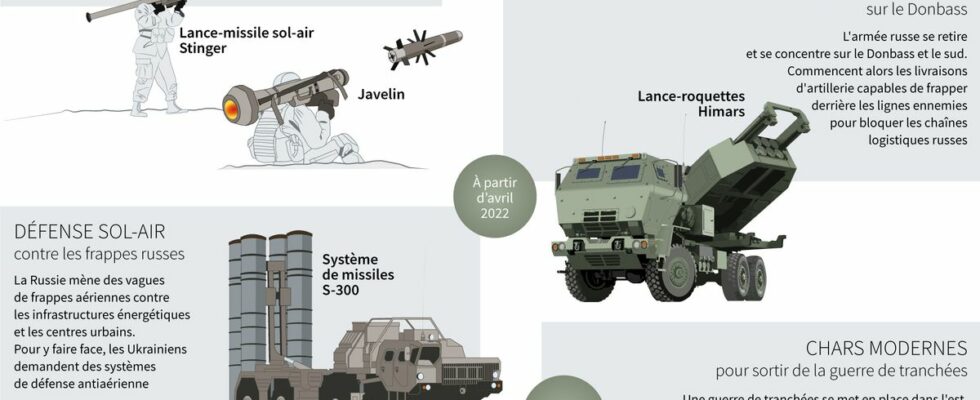A year ago, to the day, the destiny of an entire country changed, and that of Europe with it. On February 24, 2022, Russian military troops, on the orders of their President Vladimir Putin, invaded Ukraine, for a military operation announced as rapid. Since then, military and civilian losses have accumulated, and the conflict has pushed part of the population into exodus. According United Nations High Commissioner for Refugeesmore than 7.2 million Ukrainians have been registered in Europe.
Despite several military setbacks, the Russian army, helped on the ground by the paramilitary group Wagner, continued its offensive. On this sad first anniversary, here is an update on this first year of conflict, summarized in four infographics.
In the East, fierce fighting
During the invasion of its Ukrainian neighbor, the Russian army stormed the east, in the Donbass, and the south of the country. Above all, another front is opening up in the North, threatening kyiv, the capital. Vladimir Putin’s forces were finally pushed back to Irpin, a month after the start of their offensive, and the noose on the capital was loosened. From the month of April, Russian troops left northern Ukraine in favor of the eastern and southern fronts.
Despite some catches, the conflict bogged down, causing a stabilization in the summer. Volodymyr Zelensky’s men set up counter-offensives, first around Kharkiv at the end of the summer, then in Kherson around mid-November. A year after the start of the conflict, fighting is raging in Bakhmout, in the Donbass, causing severe military losses on both sides. Russia occupies more than 108% of Ukrainian territory.
On the front of the arsenal

The weapons used have changed in a year. During the first two months of the conflict, light equipment, easy to deliver and to handle, was favoured. Then, when the Russian army left the northern front to concentrate on eastern and southern Ukraine, the strategy changed. Artillery deliveries were necessary to attack the enemy lines and disrupt the opposing organization. In the spring, France notably delivered 18 Caesar guns to its Ukrainian ally.
In response to Russian airstrikes on their energy infrastructure, Ukrainians demanded, and obtained, means to protect their skies. Finally, after repeated requests from kyiv, the Western allies gave in: since the beginning of the year, heavy tanks have been delivered, notably by Germany and England. France, which gave light armor to the Ukrainians, has not (yet) contributed.
Serial fights and explosions

The NGO Acled (Armed Conflict Location and Event Data Project) has recorded the number of explosions and fights in one year of war in Ukraine. Looking at the infographic, the most intense fighting quickly focused on eastern Ukraine, part of which has been annexed by Russia since 2014.
A number of explosions also affected eastern Ukrainian territory. But we see that the south of the country, and the north, which hosted fighting at the start of the Russian offensive, were not spared. Other explosions have been recorded near kyiv, often targeted by strikes since the start of the conflict.
The crisis beyond the front

The war in Ukraine has changed the situation globally. Dependent on gas and oil, the conflict has plunged the Old Continent into an energy crisis. In wanting to break this need, Europe had to diversify its suppliers, Russia supplying it with nearly 40% of its natural gas before the conflict.
Countries opposed to Russian intervention in Ukraine have tried to limit Russian imports, and exports to the Kremlin. Europe and the United States have adopted several series of sanctions aimed at weakening the Russian economy, to prevent it from financing the conflict. Russian allies are rare. On the graph, only India, who buys a lot of weapons from Russia and did not condemn the invasion of its partner, seems to have increased its imports significantly since the beginning of the war.

